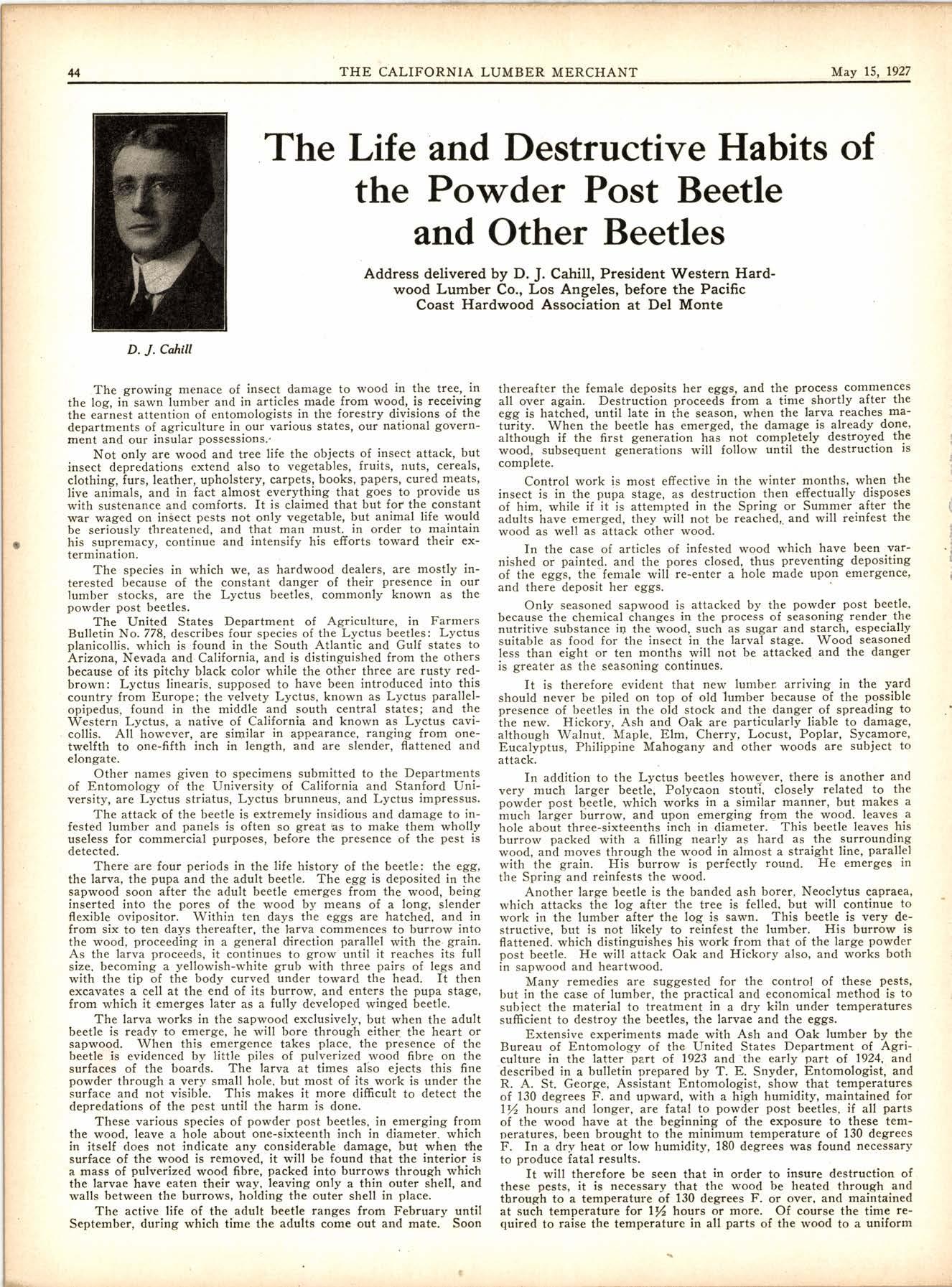
2 minute read
The McCormick Picnic
PAUL HALLINGBY TAKES OVER DUTIES OF EARL GALBRAITH-M. S. COOPER NEW PROMOTION MAN
Paul Hallingby, Sales Manager for the Hammond Lumber Company at Los Angeles, has taken over the duties of the office of Retail Sales Manager recently held by Earl Galbraith, and for the present at least no one will be pliced in Mr. Galbraith's chair. The coordination of the sales organization makes this possible, and the well known efficiency of Mr. Hallingby makes it reasonable.
Mr. Hallingby announces that a new man in a new position has 6een added to their retail sales force in the flerson of Mr. IvI. S. Cooper, Mr. Cooper is traveling imong the yards of the company, working with the local managers along the lines of business promotion, seeking to put into more active and practical service their plan and iervice departments. The Lumbermen's Service Association equipment at the Hammond yards is one of the saics rn'eapons with which Mr. Cooper will work. He cante frottr Colorado where he was formerly with the great nrerchandising firm of Halleck & Howard, and is thoroughly.experienced in the rvork of business promotion and modern rrrerchaudising in retail yards.
McCORMICK MILL AUDITOR KILLED
L S. Bothwell. auditor for Chas. R' IVlcCormick Lumber C6mpany, Port Gamble, Wash., was instantly killed April 29, when he fell ofi a speeder on his way to one of the company's camps.
(Continued from Page 51.)
52-Ques. 24" shingles, 1" -b-utt thickness, cost $9.00 per square and weigh 222 pounds per square both on square of.7rf" exposure; how-mtrch will they cost per square on llf" exPosure ?
Ans. $5.87 per square of. llf" exposure; the weight has nothing to do with it.
(Authority) Starks Mfg. Co., Seattle, Wash.
53-Ques. What is difference in strength of heartwood and sapwood Douglas Fir?
Ans. No difference in strength-heartwood is more durable.
(Authoritv) West Coast Lumbermen's Assn. "Douglas ' Fir arid Southern Pine." Prepared by C. J. Hogue of the West Coast Trade Extension Bttreau, Merch, 1927.
WILLIAM D. THOMAS
William D. Thomas, the well knorvn Sacramento rvholesale lumberman, died on Saturday evening, April 30. Mr. Thomas was a resident of Sacramento for more than sixteen years and took a prominent,part in church, fraternal and civic affairs. He is survived bv Mrs. Thomas and two children.
DONALD F. WHITE LEARNING HARDWOOD BUSINESS
Donald F. White, son of C. Harry White, vice president and general manager of White Brothers, the San Francisco and Oakland hardwood distributors, is fqllowing in the footsteps of his dad and is getting his first experiencl in the hardwood business. He is now connected with the company's Oakland yard. He has been attending the University of California at Los Angeles and is on a leave of absence for a few months. Before starting to work at the Oakland yard, he made a month's trip to the Northwest on the "Hollywood" where he visited the mill and logging operations in the Vancouver, Portland, Columbia River, Powell River, Bellingham, Puget Sound and Grays Harboi Districts. He plans to attend the next summer session at the University of California at Berkeley and in the fall rvill resume his studies again at the Berkeley institution.
co LUMBI;_cIi1I MIII; REoPENs
The sarvmill of the Sibley-Mills Lumber Co., Columbia City, Oregon, began operation April 25 after being idle for a year. Daily output will be around 100,000 feet.
S,f-Ques. In kiln drying of lumber what is meant by ' "fibre saturation point?"
Ans. "Fibre saturation point" is reached when wood cells are empty of water (or solution) and cell walls still contain normal moisture.
(Authority) Bulletin 1136 U. S. Dept. of Agriculture. 55-Ques. What is the lowest moisture content to which lumber in general can be brought through air drying?
Ans. Minimum is l2/o to l5/o.
(Authority) Bulletin 552, V. S. Dept. of Agriculture, footnote, page 7.
56-Ques. Whatis the usual moisture content to which clear Dougl.as Fir can be Kiln Dried without injury to stock, using up-to-date kilns?
Ans. 8%'.
(Authority) Bulletin 552, U. S. Dept. of Agriculture, footnote, page 7.










